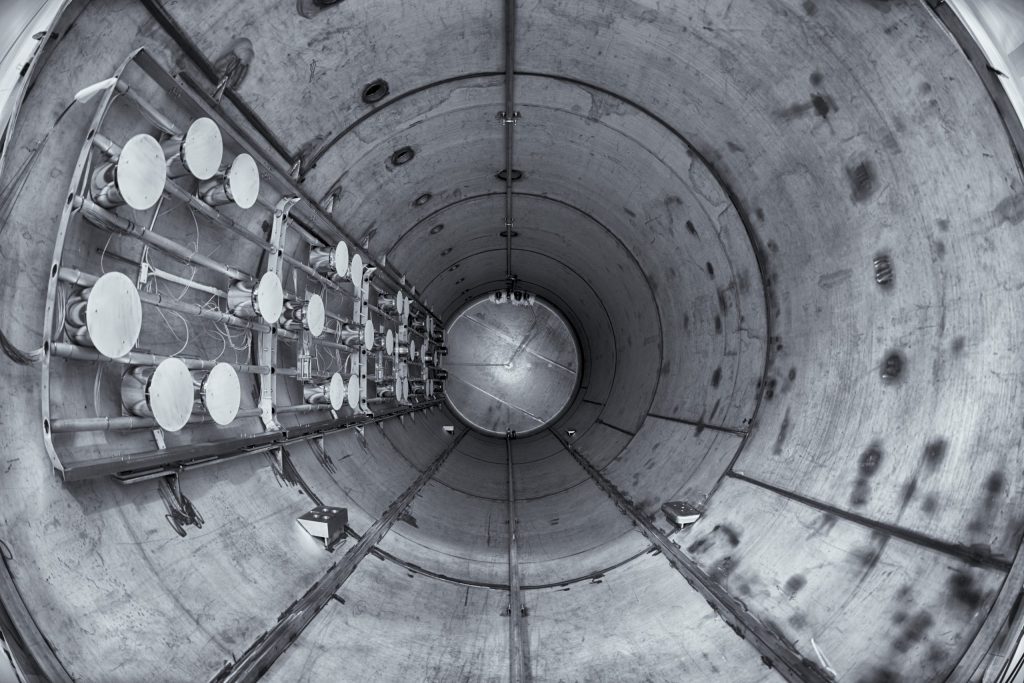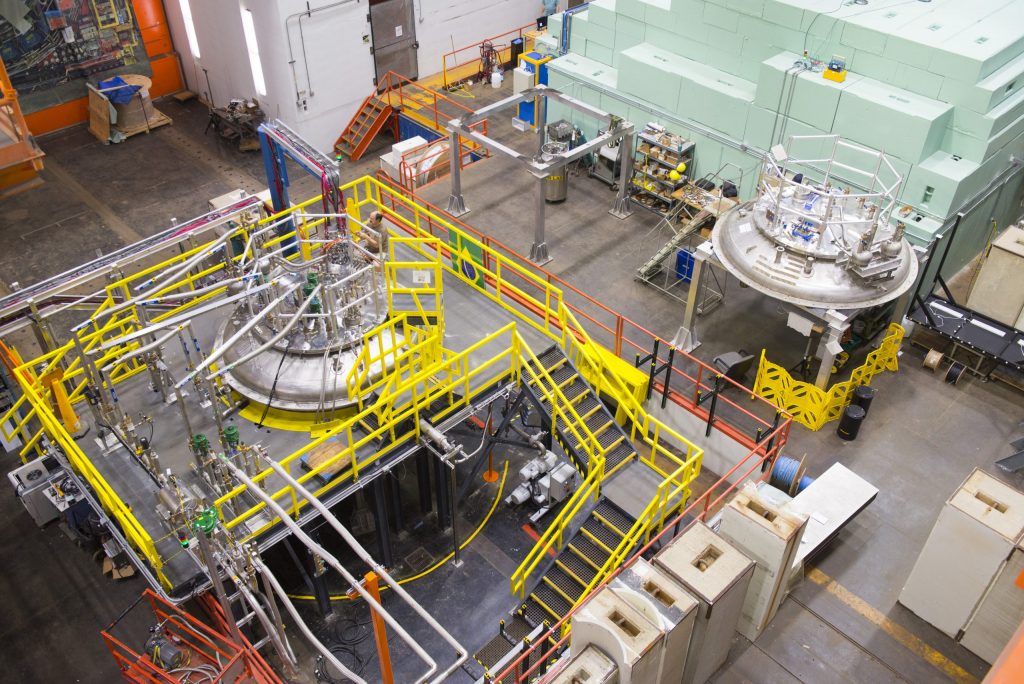Rare-physics experiments at Fermilab recently received an international boost.
In June, the INTENSE research-exchange program started up at the Department of Energy’s Fermi National Accelerator Laboratory. It is the third program to be implemented at Fermilab through the Marie Sklodowska-Curie Actions under Research and Innovation Staff Exchange, or RISE program. INTENSE researchers’ contributions will total 400 months of work over four years. The full contributed research time is an equivalent of about $10 million in salaried work.
The University of Pisa in Italy is leading the effort. Those participating in INTENSE include institutions in Belgium, France, Israel, Italy, Switzerland and the UK.
The RISE program, funded through the European Commission H2020 program, aims to promote international collaboration through the exchange of scientific research and personnel. (The European Commission is the executive body of the European Union.) European researchers get to travel to host institutions outside Europe to conduct research there, and the host institutions in return receive personnel to advance their experiments. The resulting growth and strengthening of scientific networks are global benefits.
Through INTENSE, European scientists will visit Fermilab to work on experiments at the so-called intensity frontier — experiments looking for hypothesized, rare occurrences in the subatomic realm. Such particle-accelerator-based experiments require intense particle beams, hence, “the intensity frontier” of particle physics.
Having the additional personnel work on Fermilab experiments is a clear benefit for the lab. INTENSE researchers will come to Fermilab to help develop particle detectors for the Mu2e experiment, currently under construction, and the Short-Baseline Neutrino Program, which comprises three experiments: the Short-Baseline Neutrino Detector and ICARUS (both under construction) and MicroBooNE, which began taking data in 2015.

MicroBooNE is one of three experiments that are part of the Fermilab Short-Baseline Neutrino program, in which INTENSE researchers participate. Pictured here is the interior of the MicroBooNE detector. Photo: Reidar Hahn
The Short-Baseline Neutrino Program is looking for a phenomenon — the existence of a sterile neutrino — that has been hinted at by at least one other neutrino experiment. Scientists know of three types of neutrino. A fourth, sterile neutrino would suggest a complexity behind this subtle particle not previously understood.
Mu2e is looking for a theorized but never observed transformation of a particle called a muon directly into its more familiar, lightweight cousin, the electron. The common decay mode of a muon is into an electron plus two neutrinos. The direct transformation would have the muon changing into an electron without the two neutrinos. Catching this transformation in the act could help scientists better understand the laws that govern elementary particles.
As they help develop the Mu2e detector, INTENSE collaborators will also research ways to use muon beams for fields outside particle physics, specifically geophysics and archaeology. These muographical studies, as they’re called, use muons in cosmic rays to image geological and geographical sites such as volcanoes, glaciers and archaeological digs.

Cryogenic tests for Fermilab’s Mu2e experiment will take place here. Mu2e is one of the experiments that will benefit from INTENSE researchers. Photo: Reidar Hahn
“We can all appreciate the breadth of this program,” said Fermilab scientist Emanuela Barzi, Fermilab’s coordinator for hosting researchers who receive INTENSE funding. “We all benefit. As a partner, Fermilab benefits from our global friends’ cooperation as well as the tighter scientific network that results from this exchange.”
The INTENSE grant comes with an outreach component. Scientists in the INTENSE program may, for example, participate in the Italian Summer School at Fermilab, during which students from European universities come to Fermilab to work on Mu2e and the Short-Baseline Neutrino Program.
“The grant elevates all the ways we do science — basic research, physics applications, outreach,” said University of Pisa scientist Simone Donati, INTENSE coordinator. “Having a small slice of the global particle physics community at Fermilab reminds us of the meaning of collaboration.”
In addition to the INTENSE program, the H2020 Marie Sklodowska-Curie Research and Innovation Staff Exchange support two other activities: MUSE and NEWS. Learn more.



